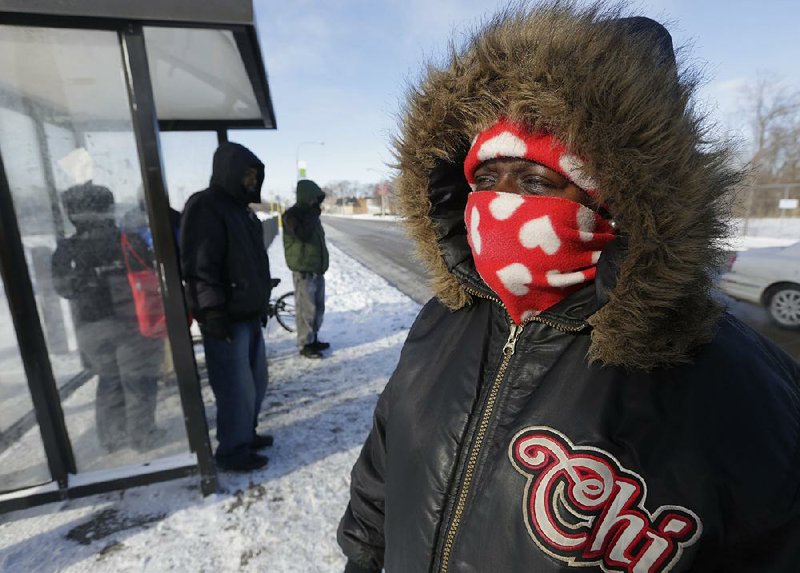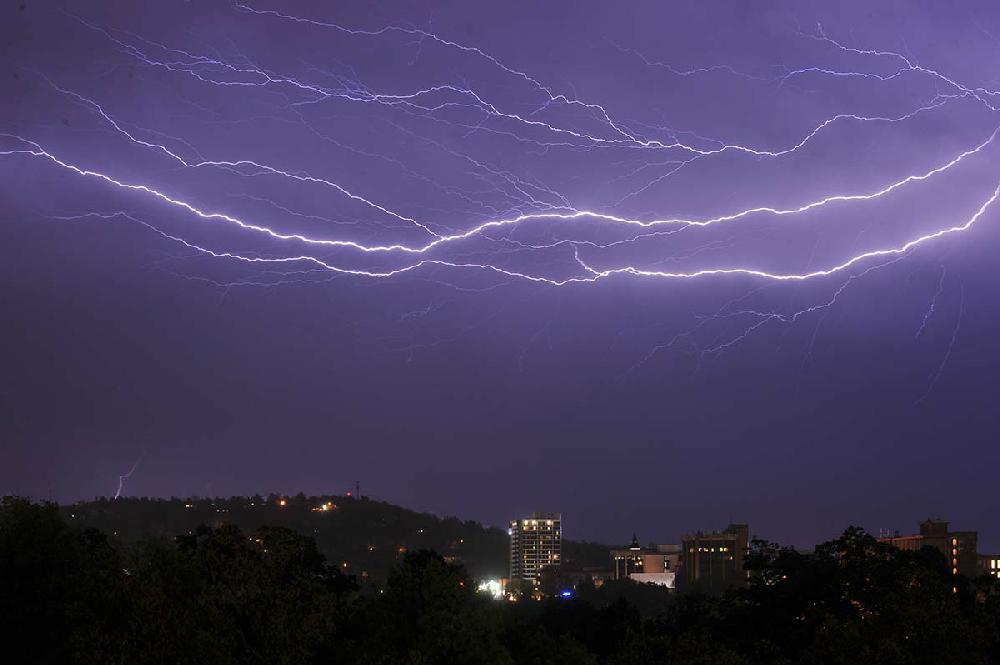Another round of dry, arctic air brought frigid weather to Arkansas on Monday, slowing construction, hindering firefighters and forcing those who work outside to bundle up.
In Little Rock, the capital city was expected to fall from Monday’s high of 36 to near 15 degrees early this morning, and today’s high should reach only into the mid-20s, National Weather Service forecasters said.
It’s warmer this week in Alaska, which usually shows negative readings on thermometers in January.
Juneau - Alaska’s capital - saw 43 degrees Monday. It didn’t even dip below 40 degrees Monday in Cold Bay, Alaska, a village in the Aleutian Islands in the Bering Sea. Officials blamed the unseasonably warm climate for an avalanche Saturday that covered a major highway leading to Valdez, Alaska, with 40 to70 feet of snow and ice.
In latitudes farther south, on the eastern edge of Canada facing the Atlantic Ocean, the temperature reached 45 degrees in Halifax, Nova Scotia.
“It’s been a roller coaster of temperatures,” said Ken Clark, a meteorologist with Accuweather, a College Station, Pa., organization that tracks weather in the United States. “The way the temperatures have cycled in Arkansas, think of a Six Flags Over Texas roller coaster instead of some kiddie park.”
It’s the third “polar vortex” to reach the state this month, said National Weather Service meteorologist John Lewis of North Little Rock.
The blast of arctic air caused temperatures to plunge Monday: Fayetteville dropped from 38 degrees to 17 degrees during the day, and Fort Smith’s mercury fell from 53 degrees to 26 degrees by Monday afternoon.
The temperatures aren’t expected to climb above freezing today in all but the southernmost counties of the state.
Little Rock City Manger Bruce Moore directed the city’s homeless-outreach vans to work longer Monday evening to transport people to shelters.
“Our officers will also offer rides throughout the night to anyone who needs transportation,” Moore said in a news release. “The city wants to ensure everyone can stay warm while the temperatures are so cold.”
Meanwhile, the National Weather Service in Memphis issued a wind-chill advisory for much of eastern Arkansas through this morning because the wind chill is expected to drop to minus 7 degrees. Wind chill is a calculation that describes the combined effect of wind and low temperatures on exposed skin.
The frequent cold spells in Arkansas are the result of stationary high pressure to the west of the state and low pressure to the east. The jet stream, a narrow band of strong wind in the upper atmosphere, dips between the two air masses like a trough, bringing the frigid air into the state.
“We’ve had one arctic blast after another every few days,” Lewis said. “We’ve had the ‘rippling’ of temperatures. You just don’t see that much.”
The first round came on Dec. 6, when snow blanketed half of the state.
On Jan. 6, temperatures dropped quickly again, from readings of 50 to 60 degrees into the single digits. Harrison recorded a low of 6 degrees, and Little Rock saw 9 degrees on Jan. 6 - the coldest mark for the city since February 1996.
The next round came on Jan. 21 after temperatures had reached the 70s in some southern Arkansas towns. Mountain Home saw 26 degrees that day, a nearly 40 degree drop in temperature from the day before.
This week, temperatures climbed again to the 60s Sunday, only to drop again on Monday.
“What’s unusual is that when you have warm air colliding with cold, you usually get some moisture with it,” Lewis said. “That’s not happening this time.”
Because of the cycling of the cold air, average temperatures have been 2 to 4 degrees colder across the state in January, Lewis said.
Fayetteville’s average temperature through the first 25 days of 2014 is 31.6 degrees - a 3.7-degree drop from its average mark of 35.3 degrees. Fort Smith’s 37.3 degree average is 1.9 degrees colder than average, and Little Rock, which averaged 38.2 degrees through Jan. 25, is 2.8 degrees colder than average.
The combination of cold, dry air and windy conditions caused the Arkansas Forestry Commission to classify the entire state as being in “high” danger for wildfires. County judges in 50 Arkansas counties mandated burn bans as of Monday afternoon.
The cold spells have hindered workers as well. Firefighters have dealt with the frigid air, said Little Rock Fire Department Capt. Randy Hickmon. “When it gets in the teens, our turnouts get wet and freeze,” he said of their gear. “It slows us down. It will tire you out pretty quickly.”
He said that when firefighters finish battling blazes, they must roll up fire hoses rapidly, so any excess water won’t freeze in them.
Security guards for Corbin Security Solutions in Little Rock and Fayetteville will continue patrolling parking lots and outside buildings during cold nights, said owner Carlos Corbin. However, they do make some allowances for the weather.
“We try to limit the time outside,” Corbin said. “They may stay an hour inside if it’s colder. We equip [guards] with caps and thicker jackets when it’s cold.”
Improvement work on Interstate 40 has been delayed because of the cold, said Randy Ort, a spokesman for the state Highway and Transportation Department. Crews planned to begin widening I-40 between Palarm Creek and the Morgan/Maumelle exit in Pulaski County today, but the work was postponed a day.
The cold has also hampered building projects, said Andrew Bowser, an owner of Bowser’s Metal Roofing in Harrison.
“Everybody has projects going on, but we can’t get out there when it’s so cold,” he said. “It gets rough working outside all day when it’s 25 degrees and windy. Sometimes it’s not worth it.
“We’re waiting on good conditions,” Bowser said. “When it warms up, we go out there and put in long hours.”
Temperatures are expected to warm again later this week, the National Weather Service predicts, and by Thursday, Arkansans should see marks near 50 degrees.
But, Lewis was quick to add, Arkansans shouldn’t get used to the balmy climate.
Meteorologists are watching yet another arctic blast form that will bring more cold air to the state on Feb. 4-5. This one is different than the previous series of cold, Lewis said. This “vortex” is expected to collide with a subtropical jet from the southwest.
“The interaction of the two could create some instability,” Lewis said. “It’ll bring rain, and there could be some snow on the backside of it.
“Stay tuned,” he said.
Front Section, Pages 1 on 01/28/2014

